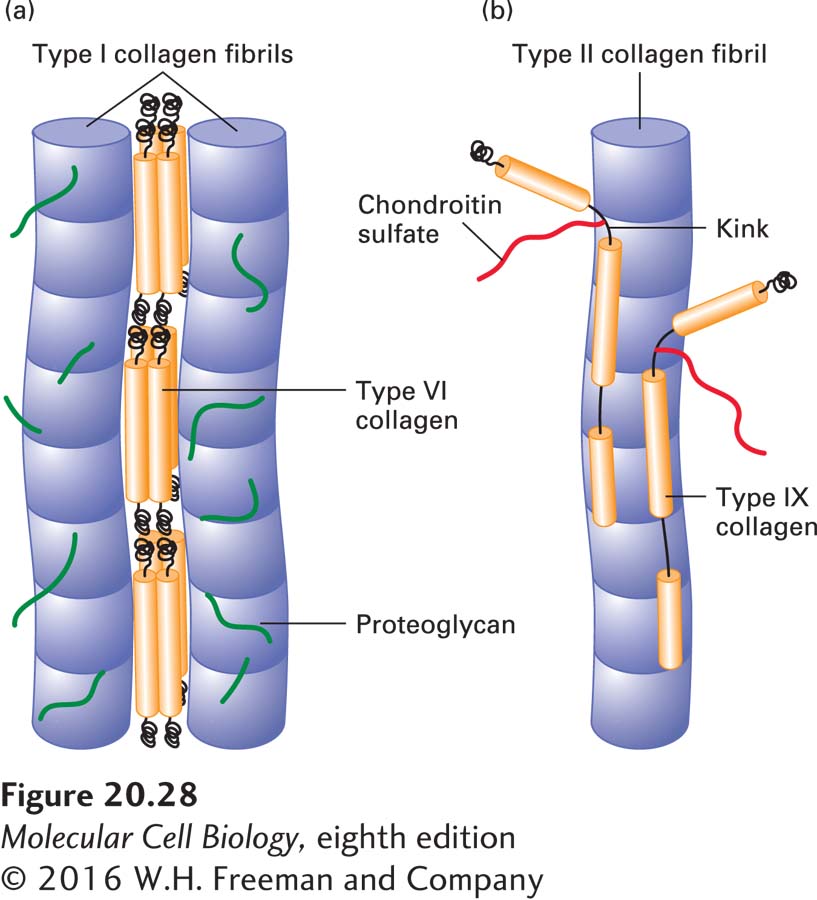
FIGURE 20- 28 Interactions of fibrillar collagens with fibril- associated collagens. (a) In tendons, type I fibrils are all oriented in the direction of the stress applied to the tendon. Proteoglycans and type VI collagen bind noncovalently to type I fibrils, coating the surface. The microfibrils of type VI collagen, which contain globular and triple- helical segments, bind to type I fibrils and link them together into thicker fibers. See R. R. Bruns et al., 1986, J. Cell Biol. 103:393. (b) In cartilage, type IX collagen molecules are covalently bound at regular intervals along type II fibrils. A chondroitin sulfate chain, covalently linked to the α2(IX) chain at the flexible kink, projects outward from the fibril, as does the globular N- terminal region. See L. M. Shaw and B. Olson, 1991, Trends Biochem. Sci. 18:191
[Leave] [Close]